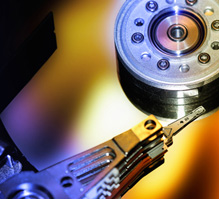
January 8 2014,
By Richard Pardoe,
technology blogger
Imagine the situation: you've just created an image of a really valuable disk. Maybe it's an image of favourite DVD that you're taking on holiday, or perhaps it's a backup of a solid state hard drive containing critical business data.
You've gone through the image creation process, and your program told you the file output was successful.
Then when the time comes, you eagerly load up your disk image – only to see a cold, hard Windows error, or an entirely empty image file. It's not a pleasant scenario!
However, this isn't the worst case. Now imagine that disk image you created is a backup of your primary hard disk, for use in case of system failure. The consequences almost don't bear thinking about.
Unfortunately, because of the nature of disk image creation, things do go wrong a portion of the time. Even with a state-of-the-art image creation tool, there's a chance that your image won't output correctly.
There are a number of possible reasons. Sometimes, specific drivers can cause problems. An unconventional partition layout might interfere, or it could some unusual system configuration could scupper the process.
Active@ Disk Image is our flagship disk image tool, and we built it to the highest standards. But because of the issues mentioned above, no disk image tool can guarantee a perfect image every time. That's why it's so crucial to test your disk image before you come to rely on it as a backup.
Here's our three-step guide to checking your disk image in order to ensure a fully functioning and reliable backup:
The only foolproof method for testing whether or not a backup disk image has been created successfully is to go through a full-cycle dry run of a system restore, using that disk image.
For this, you'll need a test disk. It can be a logical partition or an empty physical hard drive, and you'll need to restore your backup disk image to this test disk. In Active@ Disk Image, you can easily do this using the 'Image to Disk' function.
Now comes the moment of truth – actually booting the test disk to see whether the image has done its job. Turn your system on, and choose to boot from the test disk from within the BIOS. If all has gone well, your system will load, and you'll shortly see the OS and user options that you'd hope for.
If the test disk boots successfully, then the image has probably been successfully created without issue. However, it pays to tinker around with the system and ensure that all the functionality is there that you'd expect.
Ask yourself the following questions while your system is running from the test disk:
Are all your expected hardware devices showing in the Device Manager?
Does it have the video, sound and web connectivity you'd expect?
Does it run all your usual applications without a hitch?
Is the disk the same size as the image was when it was created?
If the answers to these questions are all positive, then congratulations – it looks like you've got a verified functioning disk image that can serve as bootable restoration disk if things go wrong one day.
These three steps above constitute a watertight process that will ensure that your backup disk image will really be up to the task if (and when!) you need to restore an entire disk. And once you've gone through this process, you should sleep a little sounder at night, knowing that your disk image is at hand to save the day when disaster strikes.